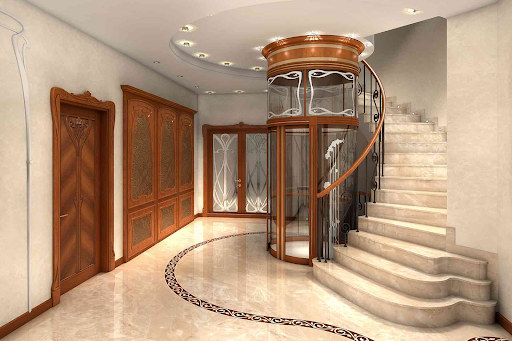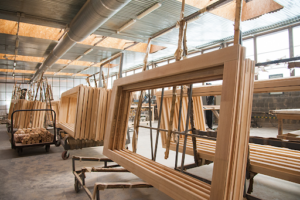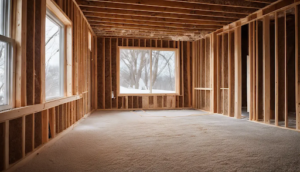Elevating Convenience: A Comprehensive Guide to In-Home Elevator Installation

In today’s fast-paced world, convenience is a paramount consideration for homeowners. As families grow and lifestyles evolve, the need for accessibility and comfort within the home becomes increasingly vital. One innovative solution that addresses these needs is the in-home elevator installation. This article provides a comprehensive guide on the benefits, types, considerations, and installation process of in-home elevators.
Understanding the Benefits of In-Home Elevators
In-home elevators offer a multitude of advantages, particularly for those with mobility challenges or multi-story homes. Some of the key benefits include:
1. Improved Accessibility
One of the primary reasons for in-home elevator installation is to enhance accessibility. This feature is particularly beneficial for elderly family members or individuals with disabilities. By providing direct access to all levels of the home, elevators eliminate the need to navigate stairs, reducing the risk of falls and enhancing overall safety.
2. Increased Property Value
Incorporating an elevator into a home can significantly increase its market value. As more buyers prioritize accessibility features, having an in-home elevator can make a property more attractive in a competitive real estate market. This installation can be a decisive factor for families looking for long-term homes that accommodate future needs.
3. Space Efficiency
Modern in-home elevators are designed to be compact and unobtrusive, making them ideal for homes with limited space. Unlike traditional staircases, which require ample room, elevators can be integrated into smaller areas without compromising aesthetics or functionality.
4. Enhanced Lifestyle
In-home elevators provide convenience that elevates daily living. From transporting groceries between floors to aiding individuals with mobility impairments, these elevators simplify everyday tasks, allowing residents to enjoy their homes fully.
Types of In-Home Elevators
When considering in-home elevator installation, it’s essential to understand the various types available. Each type serves different needs and preferences:
1. Traditional Cable-Driven Elevators
These elevators are powered by a system of cables and pulleys. They are known for their reliability and smooth operation, making them suitable for multi-story homes. However, they require a machine room for the equipment, which may limit installation options in some homes.
2. Hydraulic Elevators
Hydraulic elevators utilize a pump to move the elevator car. They are quieter than cable-driven models and can be installed in homes without a machine room. However, they may require more maintenance due to the hydraulic fluid used in the system.
3. Vacuum Elevators
Vacuum elevators operate using air pressure, making them a unique and innovative option for in-home elevator installation. These elevators are easy to install and do not require a pit or machine room, making them an attractive choice for many homeowners.
4. Stair Lifts
While not traditional elevators, stair lifts offer an alternative for those who may not require full elevator access. Stair lifts are installed on existing staircases and provide a safe and efficient means of moving between floors.
Key Considerations for In-Home Elevator Installation
Before proceeding with in-home elevator installation, homeowners should consider several key factors to ensure the project meets their specific needs:
1. Space Availability
Evaluate the available space within the home. The installation of an elevator requires careful planning to ensure adequate room for the elevator shaft and car. Homeowners should consult with a professional installer to assess feasibility and design options.
2. Weight Capacity
Different elevator models have varying weight capacities. Homeowners must choose an elevator that accommodates their specific needs, including the potential for carrying multiple passengers or larger items such as furniture and appliances.
3. Aesthetic Integration
In-home elevators should blend seamlessly with the home’s existing décor. Consideration of design, materials, and colors can enhance the overall appearance and ensure that the elevator complements the home’s style.
4. Safety Features
Safety is paramount when selecting an elevator. Homeowners should prioritize elevators with robust safety features, such as emergency stop buttons, automatic doors, and backup power systems, to ensure peace of mind.
The Installation Process
The installation of an in-home elevator typically involves several steps:
1. Consultation and Planning
Engage with a professional elevator company for an initial consultation. During this phase, experts will assess the home’s layout, discuss design preferences, and provide insights into suitable elevator types.
2. Design Approval
Once the plans are drafted, homeowners will review and approve the design. This stage includes finalizing the elevator’s size, style, and features to align with the homeowner’s preferences and requirements.
3. Construction
After approval, the installation process begins. This may involve construction work to create the elevator shaft and necessary infrastructure. The timeline for this phase can vary depending on the complexity of the project.
4. Installation and Testing
Following construction, the elevator system will be installed. A thorough testing process is conducted to ensure functionality and safety. Homeowners will receive operational training to familiarize themselves with the elevator’s features.
5. Final Inspection
Finally, a complete inspection is conducted to ensure that all systems operate smoothly and safely. Homeowners will receive all necessary documentation, including warranties and maintenance guidelines.
Conclusion
In-home elevator installation is an innovative solution that elevates convenience and accessibility within the home. By understanding the benefits, types, considerations, and installation process, homeowners can make informed decisions that enhance their living experience. As homes evolve to meet the needs of all residents, in-home elevators stand out as a vital addition that combines functionality, safety, and style. Investing in this technology not only improves quality of life but also adds significant value to the property.


